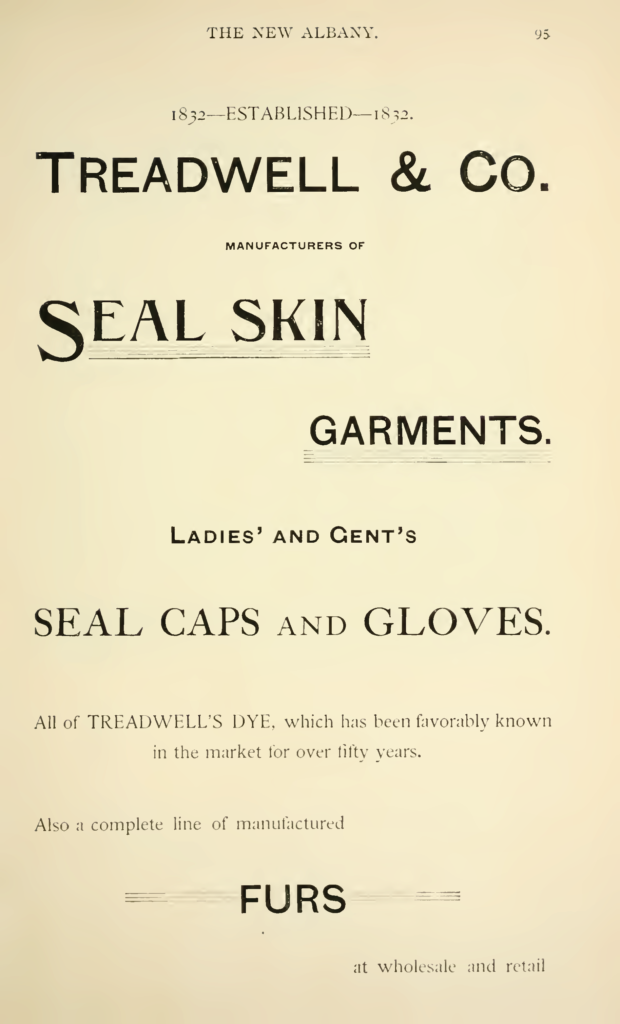
George C. Treadwell’s establishment made “furs, sacques, gloves, caps, robes,” etc. from beaver, otter, and, seemingly less likely given our inland location, fur seal. George’s son, George H., said that “my father dressed and dyed a few seal-skins in 1832, and each year there-after, and in 1864 this became a lucrative item of our business.” In 1892, Treadwell was paying his workers from $1.25 to $2 a day, about the average wage for workers in the clothing industry at that time
Howell’s Bi-Centennial History of Albany had this (and more) to say about George C. Treadwell and the seal skin industry:
About sixty years ago, Denison Williams dressed and dyed seal-skins. He
was succeeded by Packer, Prentice & Co., whose manufactures in 1831
reached the value of $500,000. John Bryan, James Chase, Robert
Cheesebrough and John S. Smith were also engaged in this business.
Twenty thousand fur seals per year were dressed, which were made into
caps. When these caps went out of fashion the trade waned. In 1858 it
revived, since which time seal-skin sacques have been manufactured.The firm of George C. Treadwell & Co., manufacturers and dealers in furs, from its small beginnings in 1832, when it was established by George C. Treadwell, late
deceased, has grown until it now ranks with the leading fur
establishments of the country. They manufacture and deal in all kinds of
fine furs, sacques, boas, caps, gloves, robes, etc. The present fine
process by which fur seal, otter and
beaver are dyed and dressed, is the result of Mr Treadwell’s industry
and skill. Their premises are 60 by 30 feet, fourstories high, brick.
The first floor is used for displaying goods, the others for manufacturing and storing. The successor of Mr. Treadwell is his son, George H. Treadwell. The house has a branch store at No. 676 Broadway, New York City, under the supervision of Henry Treadwell. In 1844, Mr. Treadwell, Sr.,
had acquired the reputation of being one of the best cap manufacturers
in the United States, and as especially excelling in dressing and
coloring furs.There are now, and long have been, extensive
dealers in every variety of hats, caps and furs, and fur goods, in this
city who are referred to under the head of the Beaver and Fur Trade, and
Trade and Commerce.
George H. was noted for arguing for conservation of seals in order to preserve the industry.

1 thoughts on “Treadwell Seal Skins”